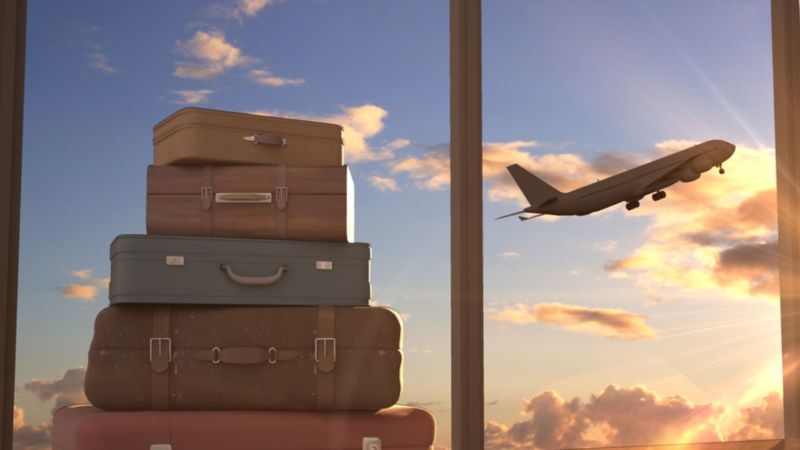In a recent Reuters Newsmaker interview, Jane Sun, CEO of trip.com, the world’s largest online travel site, discusses the future of travel
China’s travel market is rapidly rebounding from the COVID-19 pandemic as its population gets vaccinated and the public’s confidence in the safety of travel at home and abroad is restored. And that’s good news for the rest of the world, says Jane Sun, CEO of trip.com, the world’s largest online travel site.
“As doctors and governments administer vaccines and reduce the severity of COVID-19 symptoms, people will want to travel again,” Sun said in a Reuters Newsmaker interview earlier this week. “If we get to the point where COVID-19 is treated like the flu — as something that’s not life-threatening — global travel will resume, and the industry will recover. The buying power is there, and people’s desire to travel is there, too.”
Sun noted that hotel reservations during China’s Labor Day weekend at the beginning of May doubled from last year, airline ticket sales were up 28%, and car rentals were up more than 300%. Granted, most of this was domestic travel, since travel outside of China is still largely forbidden — but Sun also said that more than a year of restrictions have made Chinese citizens eager to travel internationally again.
“The pent-up demand is huge,” she said. “Lots of families want to travel across the border.”
Furthermore, if domestic trends are any indication, travelers flush with cash are also showing a greater interest in luxury accommodations and activities, such as ski trips, surfing vacations, meditation retreats, and safaris. Unique, customized experiences are in high demand, Sun noted, whereas demand for large group tours has declined.
Post-pandemic travel trends
Under normal conditions, the Chinese are among the world’s most enthusiastic travelers. According to the China Tourism Academy, Chinese travelers logged 149 million trips abroad in 2018 and spent $130 billion overseas. Currently, flights out of China to places considered “safe,” such as Singapore, are regularly full now, Sun pointed out, and the desire to travel to places like the United Kingdom, Europe, and Africa is growing.

As people start traveling again, however, Sun explained that she has seen three major trends emerge from the pandemic: i) people traveling on airlines and staying in hotels want to feel safe, so mask-wearing and other safety protocols need to be observed; ii) rather than travel in large groups, Chinese travelers are choosing to travel in small groups of four to six people and hiring a driver or tour guide to show them around; and iii) people who do travel want “flexible and personalized” options, as well as the ability to cancel tickets without being charged.
The travel industry “needs to put customers first,” Sun said, adding that when the coronavirus hit China last year, “we offered refunds without asking questions, which enabled our customers to have peace of mind, and that is very important.”
The prospects for resumption of business travel are a bit murkier, Sun admitted, but she is optimistic that once leisure travel recovers, business travel will follow — even though businesses around the world have discovered the cost efficiencies of remote work.
“I think there are a couple of aspects of business travel that are difficult to replace,” she said. “Going to a conference where you meet 200 people — that’s hard to replicate with Zoom.”
In the meantime, countries that need to attract tourism in order to revive their economies should be focusing on containment of the coronavirus, she said. “Countries that demonstrate the ability to control COVID-19 will attract more customers,” she advised, adding that “the focus of governments should be to protect people first. If the risk can be reduced, borders can open.”
Poised for a travel boom
Inside China, demand for travel services is quickly returning to pre-pandemic levels and in some cases exceeding it, Sun observed, so trip.com is currently focusing its resources on the domestic market. When borders open up, however, Chinese citizens are primed and ready to travel internationally, she added.
As a company, trip.com is positioning itself to take maximum advantage of this expected resurgence in travel. Even though its revenue plunged by almost half in 2020, trip.com has invested more than $4 billion in research & development over the past few years to enhance its mobile user experience and develop more capable forms of machine learning and artificial intelligence. The company has also recently acquired several smaller travel sites, such as Skyscanner and the India travel site Makemytrip.com. And on April 19, the company launched a secondary listing on the Hong Kong Stock Exchange in a bid to raise more than $1.4 billion.
“Being listed in Hong Kong gives us a couple of advantages,” Sun said. “Our brand name is very well known in Asia, so it gives us access to more potential customers,” as well as “the opportunity to collaborate” with partners in Asia’s airline, hotel, and tourism industries. Attracting more Asian investors is also part of the company’s strategy, Sun said, since the company’s investors have historically been concentrated in the U.S. and Europe.
And what, you ask, is at the top of Sun’s own bucket list of upcoming travel adventures? An African safari.






